
The second RMS Laconia was a Cunard ocean liner, built by Swan, Hunter & Wigham Richardson as a successor of the 1911–1917 Laconia. The new ship was launched on 9 April 1921, and made her maiden voyage on 25 May 1922 from Southampton to New York City. At the outbreak of the Second World War she was converted into an armed merchant cruiser, and later a troopship. She was sunk in the South Atlantic Ocean on 12 September 1942 by torpedoes. Like her predecessor, sunk during the First World War, this Laconia was also destroyed by a German submarine. Some estimates of the death toll have suggested that over 1,658 people were killed when the Laconia sank. The U-boat commander Werner Hartenstein then staged a dramatic effort to rescue the passengers and the crew of Laconia, which involved additional German U-boats and became known as the Laconia incident.
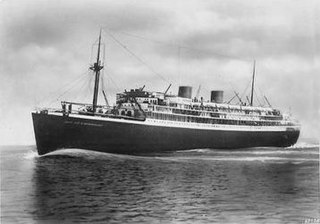
TSMS Lakonia was an ocean liner that was launched in 1929 for Netherland Line as the ocean liner Johan van Oldenbarnevelt. In 1962 she became the Greek Line cruise ship TSMS Lakonia. On 22 December 1963 she caught fire at sea and on 29 December she sank. 128 people were killed in the disaster.
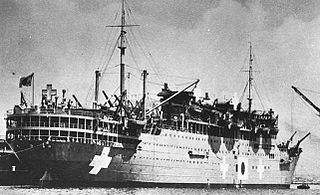
MS Aramis was a Messageries Maritimes ocean liner that was launched in France in 1931. She was a sister ship of Félix Roussel and Georges Philippar. The three sisters were highly unusual in having square funnels. Aramis' interior was an Art Deco interpretation of Minoan design.

SS Minnedosa was one of a pair of transatlantic steam ocean liners that were built in the United Kingdom, launched in 1917 and operated by Canadian Pacific until 1935. Her sister ship was Melita.

SS Clan Alpine was a UK steam cargo liner. She was launched in 1918 and sunk by a U-boat in 1943.

SS Potsdam was a steam ocean liner that was launched in Germany in 1899 for Holland America Line. In 1915 Swedish American Line acquired her and renamed her Stockholm.
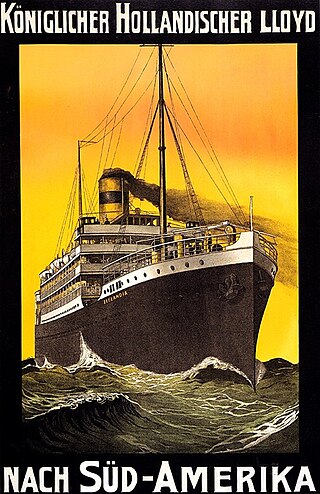
USS Zeelandia was an ocean liner that was built in Scotland in 1910 and scrapped in the Netherlands in 1936. She was the largest ship in the Koninklijke Hollandsche Lloyd (KHL) fleet from 1910 until the liners Gelria and Tubantia were completed in 1913 and 1914. She was USS Zeelandia from April 1918 until October 1919, when she was a United States Navy troopship.
Domala was an 8,441-ton cargo liner which was built in 1920 and launched as Magnava. Following damage sustained in an air attack in 1940, she was rebuilt as a cargo ship and renamed Empire Attendant. In 1942 she was torpedoed and sunk with the loss of all crew.

SS Polar Chief was a merchant steamship that was built in England in 1897 and scrapped in Scotland in 1952. In its 55-year career it had previously been called Montcalm, RFA Crenella, Crenella, Rey Alfonso, Anglo-Norse and Empire Chief. Early in the First World War it spent eight months pretending to be the battleship HMS Audacious.
SS Hertford was a refrigerated cargo steamship that was launched in Germany in 1917, seized by the United Kingdom in 1920 as World War I reparations, and sunk by a U-boat in 1942 with the loss of four members of her crew.

HMS Agamemnon was originally the Blue Funnel Line refrigerated cargo ship Agamemnon. She was built in 1929, traded between the UK and the Far East, and was scrapped in 1963. During the Second World War she was converted into an auxiliary minelayer in 1940, and then into an amenities ship in 1943.
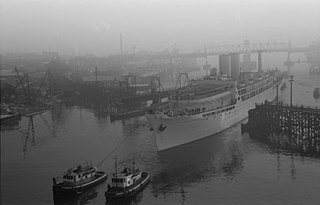
HMS Menestheus was originally the Blue Funnel Line refrigerated cargo ship Menestheus. She was built in 1929, and traded between the UK and the Far East. She was an auxiliary minelayer from 1940 to 1943. When the Second World War in 1945, she was undergoing conversion into an amenities ship. She was scrapped in 1953 after being gutted by fire.

HMS Southern Prince was a motor ship that was built in 1929 as the refrigerated cargo ship Southern Prince. She was commissioned into the Royal Navy in 1940 as a minelayer. She became a headquarters ship and then an accommodation ship in 1944, was a fleet training ship in 1945, and returned to civilian trade in 1946. In 1947 she was sold to Italian owners who had her refitted as a passenger ship and renamed her Anna C. From 1952 she was a cruise ship. She was scrapped in 1972.

Christiaan Huygens was a Dutch ocean liner that was built in 1927 by the Nederlandsche Scheepsbouw Maatschappij for the Stoomvaart Maatschappij Nederland (SMN). She was employed on the Amsterdam – Batavia route until the outbreak of the Second World War. Requisitioned as a troopship, she was employed in the Mediterranean Sea and Indian Ocean. Surviving the end of the war in Europe, she struck a mine in the Scheldt on 26 August 1945 and was beached. She broke in two on 5 September and was declared a total loss.
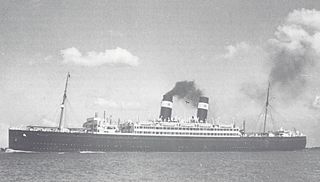
SS Pennland was a transatlantic ocean liner that was launched as Pittsburgh in Ireland in 1920 and renamed Pennland in 1926. She had a succession of UK, German and Dutch owners and operators. In 1940 she was converted into a troopship.
SS Melita was one of a pair of transatlantic steam ocean liners that were built in the United Kingdom, launched in 1917 and operated by Canadian Pacific until 1935. Her sister ship was Minnedosa.
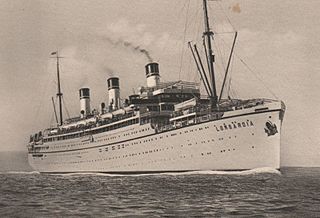
SS Lombardia was one of a pair of transatlantic steam ocean liners that were launched in 1914 in Germany for the Hamburg America Line (HAPAG), sold to a Dutch shipping line in 1916, and seized by the United States as World War I reparations in 1922. United American Lines (UAL) operated her until 1926, when HAPAG bought her back.
MS Abkhazia was one of six Soviet Krim-class cargo liners during the late 1920s built for the Black Sea State Shipping Company. During the Second World War, she participated in the Siege of Odessa in 1941 and the Siege of Sevastopol in 1942. She was sunk by German aircraft in the port in June.

MV Deucalion was a Blue Funnel Line refrigerated cargo ship that was built in England in 1930 and sunk in the Second World War in 1942. She survived being damaged in the Liverpool Blitz in December 1940 and took part in two Malta convoys to relieve the Siege of Malta. She survived air attacks during the first of these, Operation Substance, in July 1941 but was lost on her second Malta Convoy, Operation Pedestal, in August 1942. This was the third of five Blue Funnel ships to be named after Deucalion, a mythological king of Thessaly in Ancient Greece.

SS Aquileia was a Dutch-built steamship that was launched in 1913 as the ocean liner and mail ship Prins der Nederlanden for Netherland Line. She ran scheduled services between Amsterdam and the Dutch East Indies until 1930, when she was laid up.

















